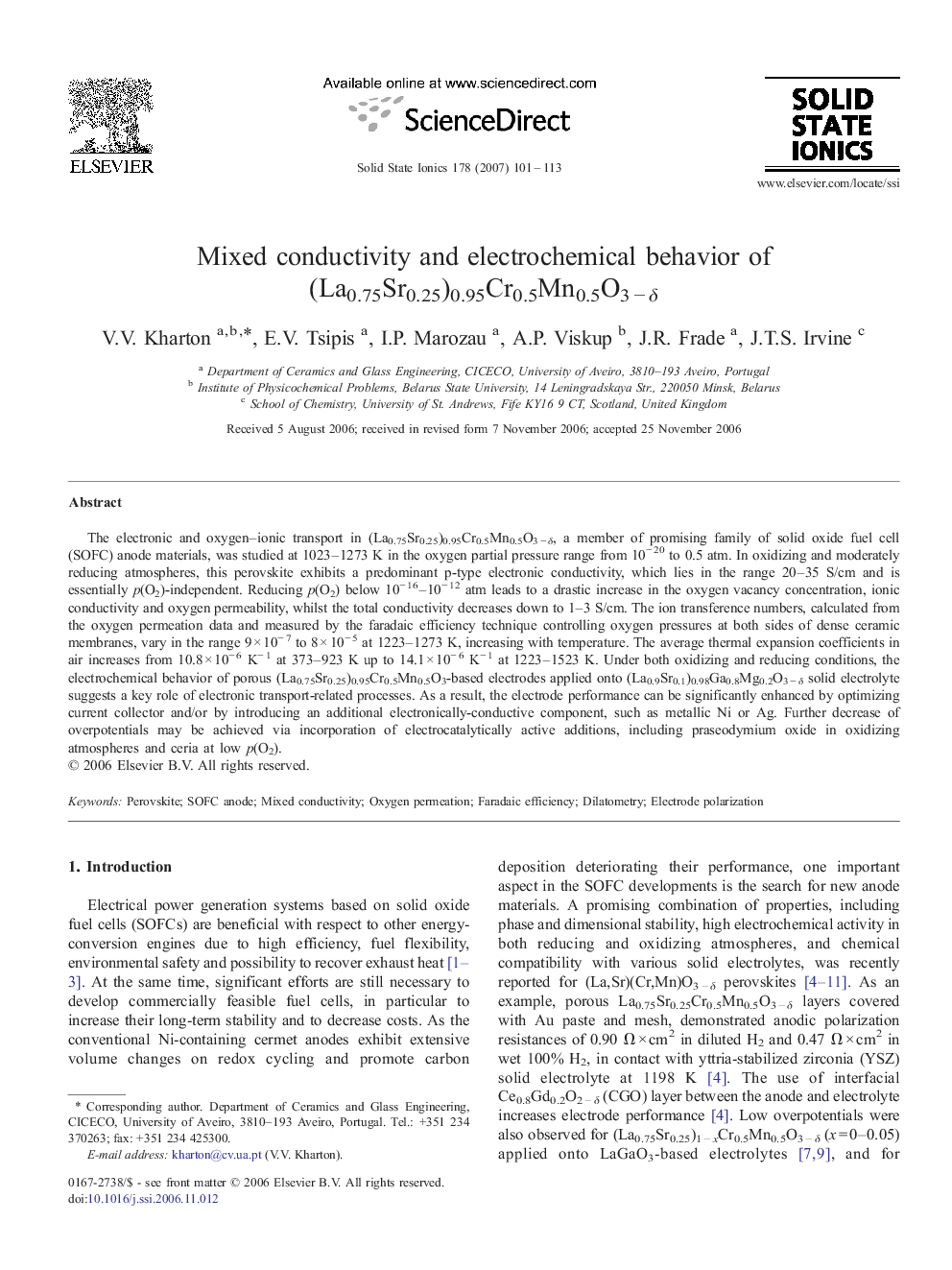| Article ID | Journal | Published Year | Pages | File Type |
|---|---|---|---|---|
| 1297383 | Solid State Ionics | 2007 | 13 Pages |
The electronic and oxygen–ionic transport in (La0.75Sr0.25)0.95Cr0.5Mn0.5O3 − δ, a member of promising family of solid oxide fuel cell (SOFC) anode materials, was studied at 1023–1273 K in the oxygen partial pressure range from 10− 20 to 0.5 atm. In oxidizing and moderately reducing atmospheres, this perovskite exhibits a predominant p-type electronic conductivity, which lies in the range 20–35 S/cm and is essentially p(O2)-independent. Reducing p(O2) below 10− 16–10− 12 atm leads to a drastic increase in the oxygen vacancy concentration, ionic conductivity and oxygen permeability, whilst the total conductivity decreases down to 1–3 S/cm. The ion transference numbers, calculated from the oxygen permeation data and measured by the faradaic efficiency technique controlling oxygen pressures at both sides of dense ceramic membranes, vary in the range 9 × 10− 7 to 8 × 10− 5 at 1223–1273 K, increasing with temperature. The average thermal expansion coefficients in air increases from 10.8 × 10− 6 K− 1 at 373–923 K up to 14.1 × 10− 6 K− 1 at 1223–1523 K. Under both oxidizing and reducing conditions, the electrochemical behavior of porous (La0.75Sr0.25)0.95Cr0.5Mn0.5O3-based electrodes applied onto (La0.9Sr0.1)0.98Ga0.8Mg0.2O3 − δ solid electrolyte suggests a key role of electronic transport-related processes. As a result, the electrode performance can be significantly enhanced by optimizing current collector and/or by introducing an additional electronically-conductive component, such as metallic Ni or Ag. Further decrease of overpotentials may be achieved via incorporation of electrocatalytically active additions, including praseodymium oxide in oxidizing atmospheres and ceria at low p(O2).
